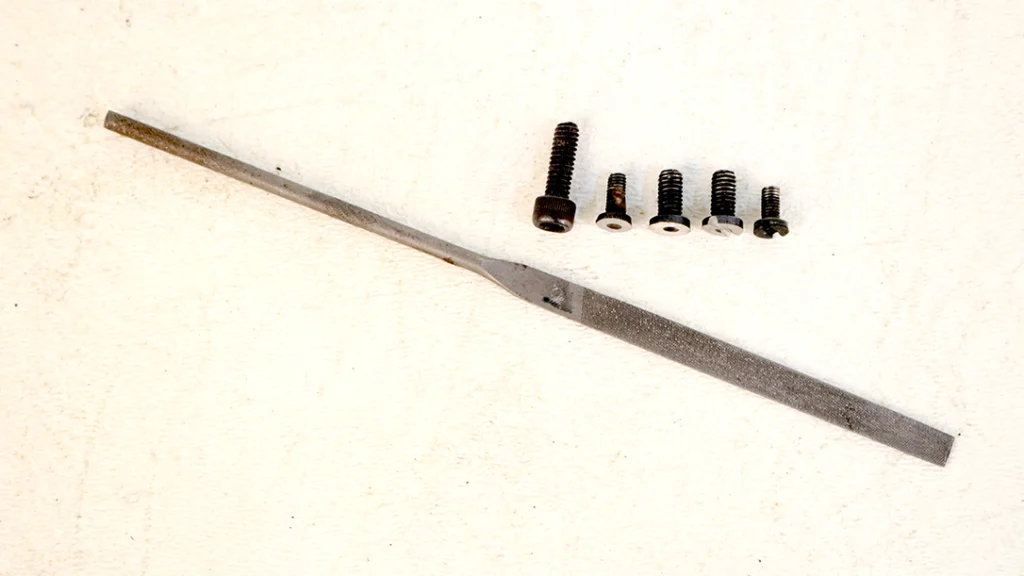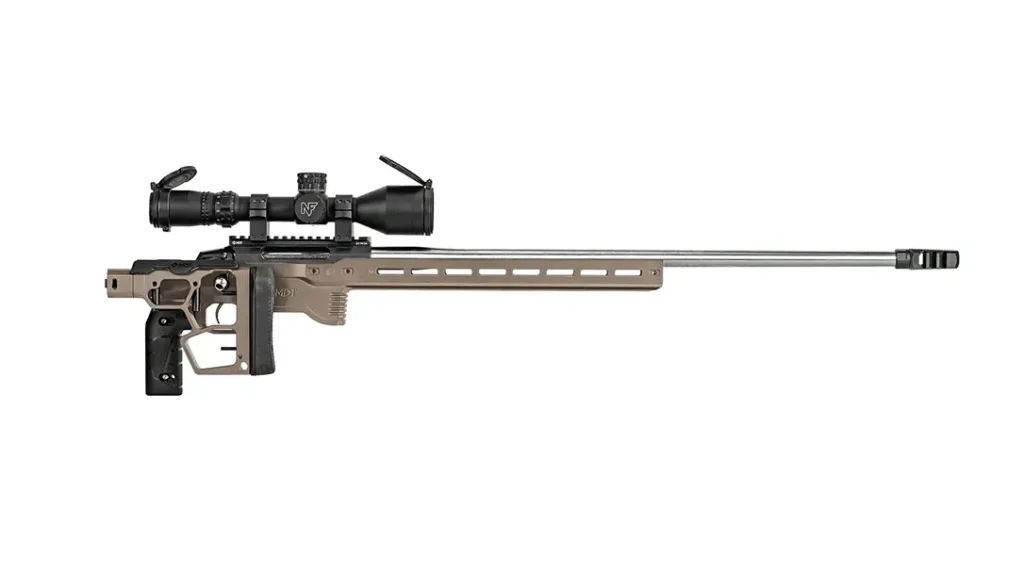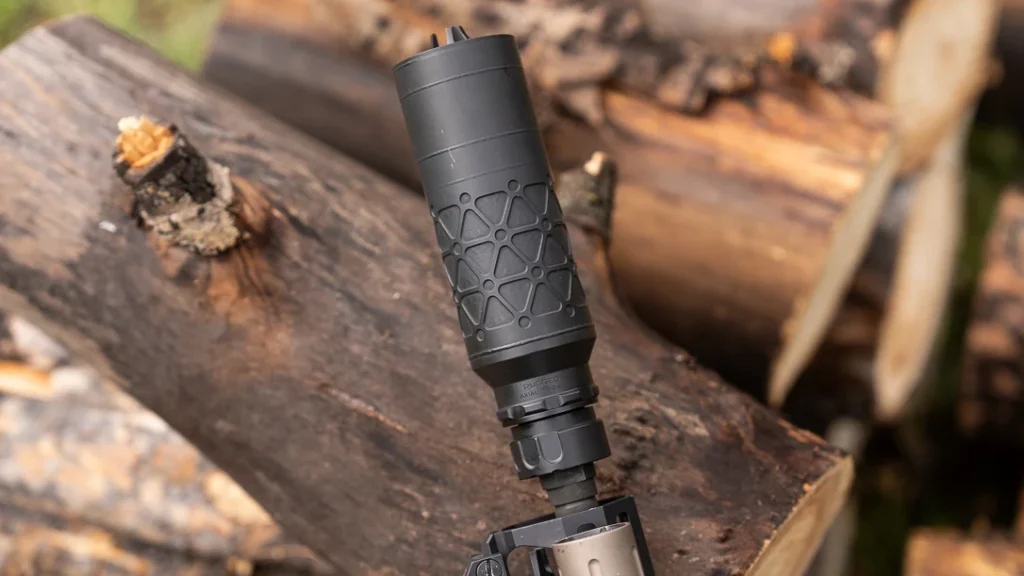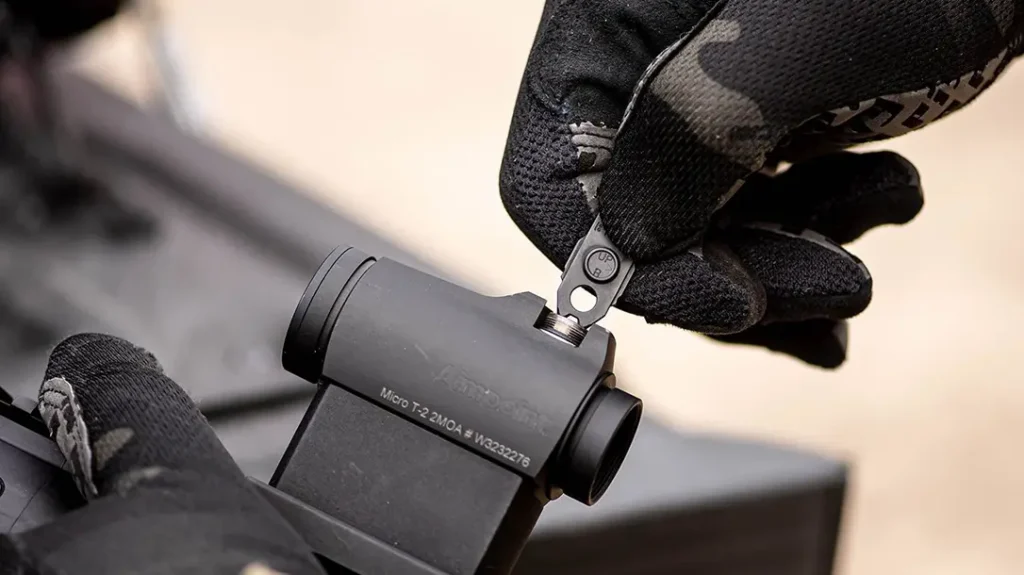This post was originally published on Athlon Outdoors.
Matthäus Hetzenauer was born two days before Christmas in 1924 in the Tyrolean village of Brixen im Thale in Austria. Anyone entering the world in 1924 would have been eighteen years old in 1942. That was a hard year to be born. These were the young men who fought World War 2.
Hetzenauer was raised on his parents’ modest Austrian farm alongside his two brothers and a sister. His rural upbringing left him well-acquainted with both fieldcraft and deprivation. That was great preparation for what was to come. In the Spring of 1944, young Matthäus attended the sniper school at Truppenübungsplatz Seetaler-Alpe in Steiermark. Upon graduation, Gefreiter Hetzenhauer was assigned to the 3d Gebirgs-Division.
The 3d Gebirgs-Division was a mountain unit. The Gebirgsjägers were aggressively trained in mountaineering and tactical movement in harsh terrain. Hetzenauer and his mates were destined for the frigid hell of the Eastern Front.
Advertisement — Continue Reading Below
Hetzenauer was originally equipped with a scoped Mauser Kar98k bolt-action sniper rifle. Later, he was issued a G43 equipped with a ZF4 4x telescopic sight. He fought the Soviets in Hungary, Slovakia, and the Carpathian Mountains. For a hard-charging young fire breather with a hawk’seyes and ice water for blood, the hunting was good.
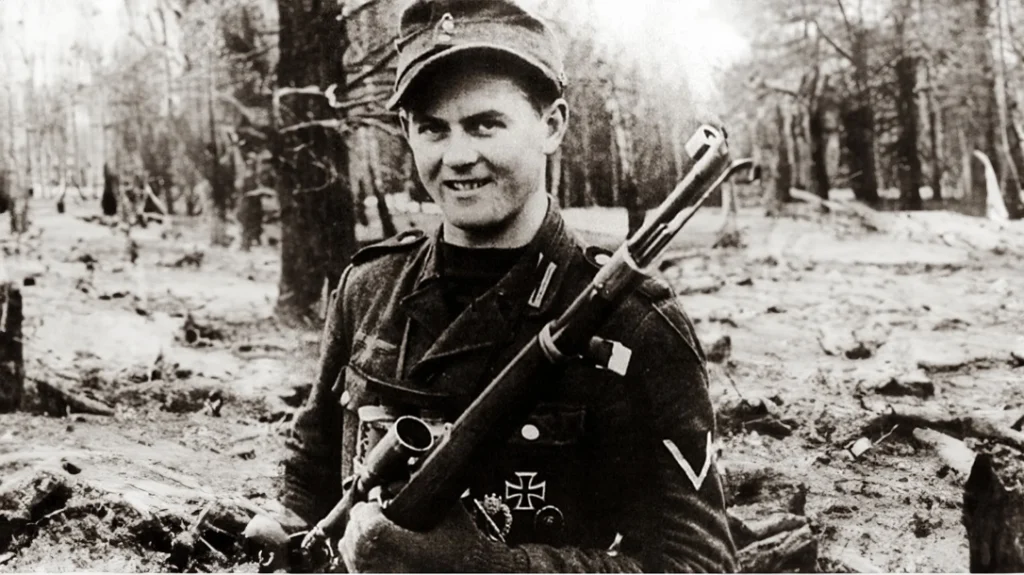
In November of 1944, Hetzenauer was badly wounded during a Russian artillery barrage. Once he recovered, he returned to the front. By April of 1945, the young sniper had amassed an amazing 345 confirmed kills. Considering a German sniper’s kills had to be verified by an officer to be counted against his total, the actual number was likely much higher. By war’s end, Hetzenauer had been awarded the Knight’s Cross of the Iron Cross, Nazi Germany’s highest award for bravery.
Advertisement — Continue Reading Below
Kar98k Sniper Rifle
The rifle that Gefreiter Hetzenauer used at the outset of his career as a German sniper was the Kar98k. This bolt-action repeater fed 7.92x57mm ammunition via an internal 5-round box magazine. The Kar98k was an evolutionary development of the World War I-vintage Gewehr 98, itself an offshoot of the previous Mauser Model 1895.
The Kar98k was a controlled-feed rifle. This meant that the extractor snapped over the cartridge rim as the round was pushed out of the magazine. This design feature ensured positive feeding and extraction regardless of orientation.

Advertisement — Continue Reading Below
You usually charged the Kar98k from the top via 5-round stripper clips. The empty clip was then automatically discarded as the bolt was closed. However, scope-mounted Kar98k rifles lacked the space to accommodate the strippers. As such, Kar98k sniper rifles had to be manually loaded one round at a time.
Sniper Particulars
The Germans were arguably the world leaders in scoped rifles during the interwar years. Curiously, a Soviet military contingent on an official inspection of German Wehrmacht facilities before the war was shown a series of optical sights used on military sniper rifles. These officers then returned home and directed Soviet industry to construct copies of the Zeiss unit. As a result, Russian forces in World War II were amply supplied with optical sights for their Mosin-Nagant rifles that were essentially mechanical replicas of those German examples.
Back in Germany, tactical optics suffered from a deplorable lack of standardization. During the course of the war, the Germans produced some 132,000 dedicated Kar98k sniper rifles. However, these weapons used a wide variety of optics, each of which had its own eccentricities. These optics included the Zeiss Zielvier 4x (ZF39) telescopic sight, the 6x Zeiss Zielsechs and 8x Zielacht optics. They also used the 4x and 6x Ajack, Hensoldt Dialytan 4x, Kahles Heliavier 4x and Opticotechna Dialytan 4x scopes.
Advertisement — Continue Reading Below
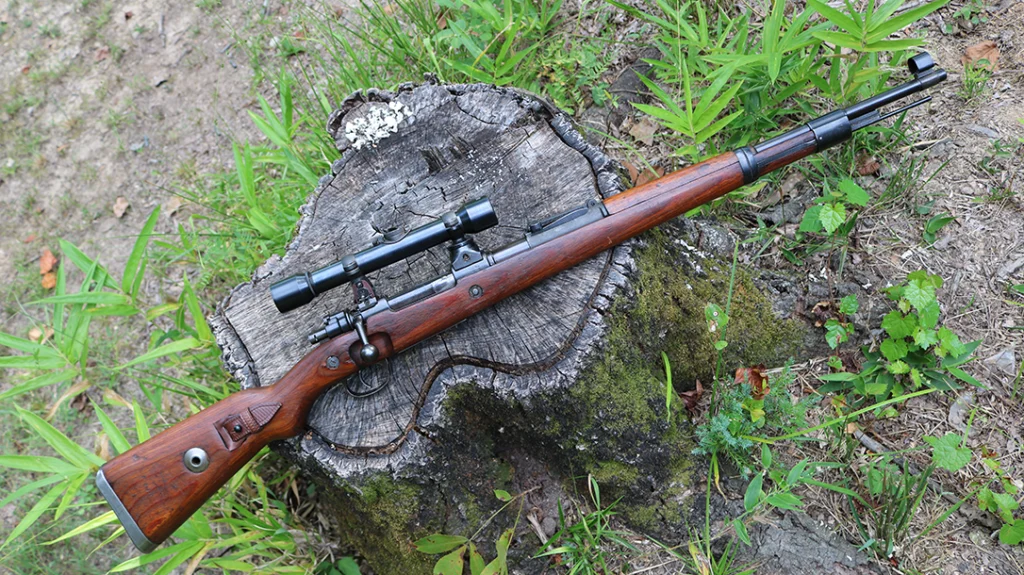
Street Price
Specialist’s weapons invariably command a premium on the collector’s market. True Gun Values lists the average street price for a standard used Kar98k at around $935. On the top end, a vintage WWII Kar98k SS double-claw sniper rifle sold via Rock Island Auctions back in 2019 for a whopping $31,625. This particular example had some unique features, but these sniper rifles do always bring good money. A more conventional version with a Dialytan 4x optic sold for $9,200 around the same time. These sorts of rarefied numbers put such a piece way out of my reach. What’s a brother to do?
I found the solution to my quandary at a modest regional gun auction. This Kar98k showed the honest use of a typical wartime gun. The optic seemed to be a cheap imported knockoff of a Dialytan RH36 4×32 telescopic sight. However, there was a great deal more to it than that.
Advertisement — Continue Reading Below
Rifle Details
For reasons known only to God, when the Chinese serfs who designed this optical sight were putting it together they felt inexplicably compelled to print the word, “Sniper” on each side of the ocular bell. There was even a little stylized crosshair included to complete the outrage. I am fairly certain that wartime German optics did not have the English word, “Sniper” etched anywhere on their sights. This contemporary copy also had a little more fluffy writing on the objective bell. If any of you out there was responsible for that, I sure wouldn’t admit that to anyone.
The optic seems to be of decent enough quality. However, that “Sniper” etching was like having sand on my eyeball. Additionally, the sight was held on the rifle via hex screws.
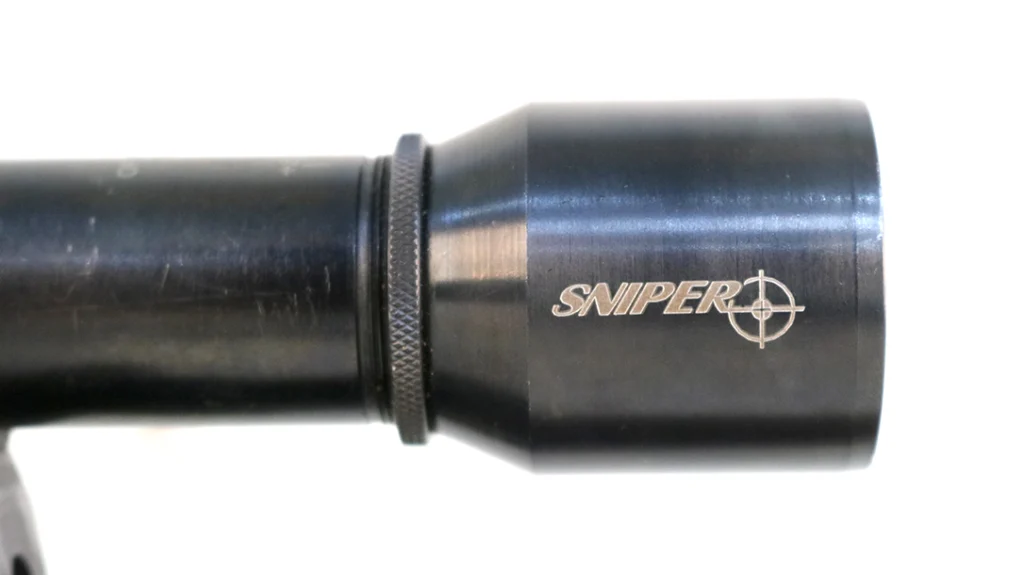
Advertisement — Continue Reading Below
The first hex screws were pioneered in the 1860’s. Mass production of hexagonal screw heads was patented in 1910. However, the world did not really take note until after World War 2. Balance of probability, original German optical sights were held in place with conventional slotted screws. With these two major deficits identified—the hex screws and the obnoxious verbiage—it was time to contrive some solutions.
Engineering Solution to Every Problem
I began with the screws. Our local hardware store has a selection of slotted gunsmith screws, but the examples on this rifle sported weird metric threads and were not readily replaceable. Rather than potentially order a bunch of stuff I didn’t actually need online, I simply harvested the hex screws from the scope rings and mount and retired to my workshop.
For starters, I removed the hex bit using a grinding stone and sanding wheel. I then secured each screw in a non-marring vise and carefully slotted it using a fiber-reinforced cutoff wheel on a Dremel tool. With that complete, I squared the slots by hand using a needle file. After cleaning everything off, I dipped the revised screws in cold blue solution. The end result looks pretty close to factory if I say so myself.
That all sounds tougher than it actually was. Start to finish for all eight screws was maybe 45 minutes, and they fit perfectly. Like most such projects, it is more important to be patient and meticulous than to enjoy any particular natural mechanical proclivities. Those lame markings, however, were another issue altogether.
Dremel Or Laser
I could technically have removed those things manually with my Dremel, but that would have looked dreadful. Instead, I opted for a laser engraver. The best way to access a laser engraver is to make friends with somebody who already has one. These remarkable devices are incredibly capable, but a decent example will set you back a couple grand. I maintain a 07/02 manufacturer’s FFL and use one to mark NFA items. It is the perfect tool for this task.
There is a proper learning curve to mastering a laser engraver. The machine is simple enough, but the control software is really complicated. Lightburn is the industry standard, but this is a commercial-grade package with lots of capabilities that normal people will never use. That makes it undeniably cumbersome. There are scads of online tutorials, but the way to learn it is to just gather up a bunch of metal stuff and practice. I think I engraved at least a little something on most every old tool I owned.
The machine projects a little laser box describing the footprint it will engrave. This lets you get everything positioned perfectly before making any permanent adjustments. What power levels to use and how many passes to make are simply a function of experience and trial and error. I established a rectangular area that would occlude the existing markings and then made one pass at a time until the old stuff was gone. A little touch up with cold blue, and we were done.
Accessorizing
This rifle came bereft of accessories. My buddies at World War Supply hooked me up with a front sight hood, 12.5-inch cleaning rod, action cover, rear sight cover, and sling. WorldWarSupply is Candyland for period replica field gear and gun stuff. Their prices are great, and their selection extensive.

Early Kar98k cleaning rods were ten inches long. The Wehrmacht swapped to 12.5-inch versions in the late 1930’s. You can strip the rifle and see the location of the securing nut from the inside of the buttstock to tell the difference. Or you can just stick a piece of stiff wire down the cleaning rod hole and measure how deep it goes. In practice, several Landsers would get together and pool cleaning rods to make one serviceable unit. The kit from WorldWarSupply is factory new and a drop-in fit.
The Rest of the Story
Matthäus Hetzenauer survived the war but was captured by the Soviets in May of 1945. He spent the next five years languishing in a Russian POW camp. Eventually he came back home to Brixen im Thale, married, and made a life for himself. He passed away in October of 2004 at the age of 79.
Our final product would induce the gyrating fantods in your typical serious German militaria collector. The glass quality is underwhelming, but the clicky bits all work as advertised. The wheel on the top of the scope adjusts elevation. Windage changes are fairly cumbersome and are effected via the rear mount. All in all, by the standards of the day, our replica Kar98k sniper rifle would rate a solid decent on the range.
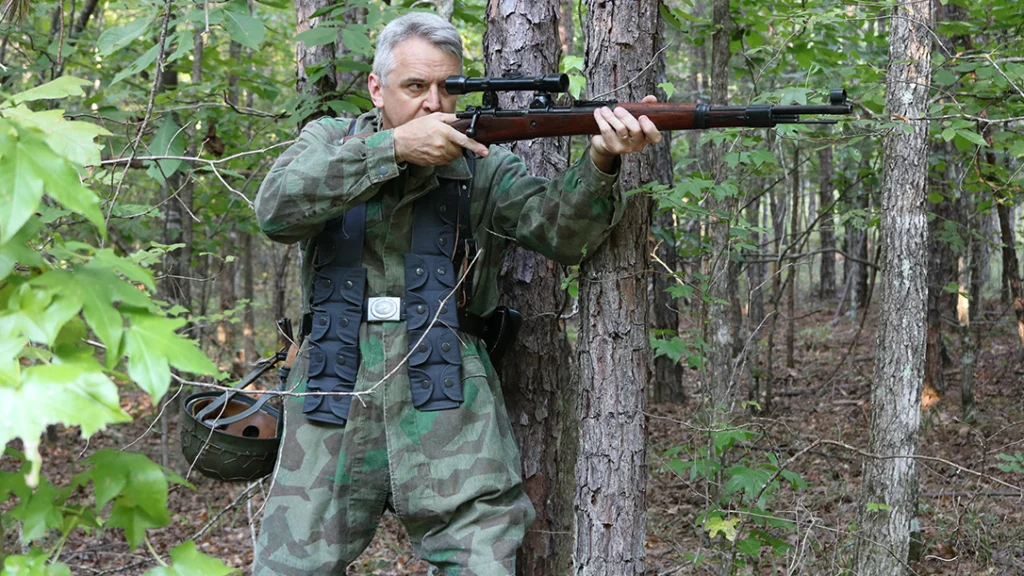
Our Frankenscrews turned out great. Excising the existing nonsensical markings with the laser engraver was somewhat akin to removing a tattoo. The original offending iconography is gone, but it does leave a scar. That should fade a bit with time.
The end result would not pass muster in the hallowed Smithsonian collection or the Cody museum. However, the price of the laser engraver notwithstanding, I got into the rifle for appreciably less than a grand all up even with the accessories. Despite its questionable parentage, the old girl still looks right smart hanging on the wall.
Special thanks to World War Supply for the period gear used in equipping our reenactor.
The post Kar98k 7.92x57mm Sniper Rifle appeared first on Athlon Outdoors Exclusive Firearm Updates, Reviews & News.
